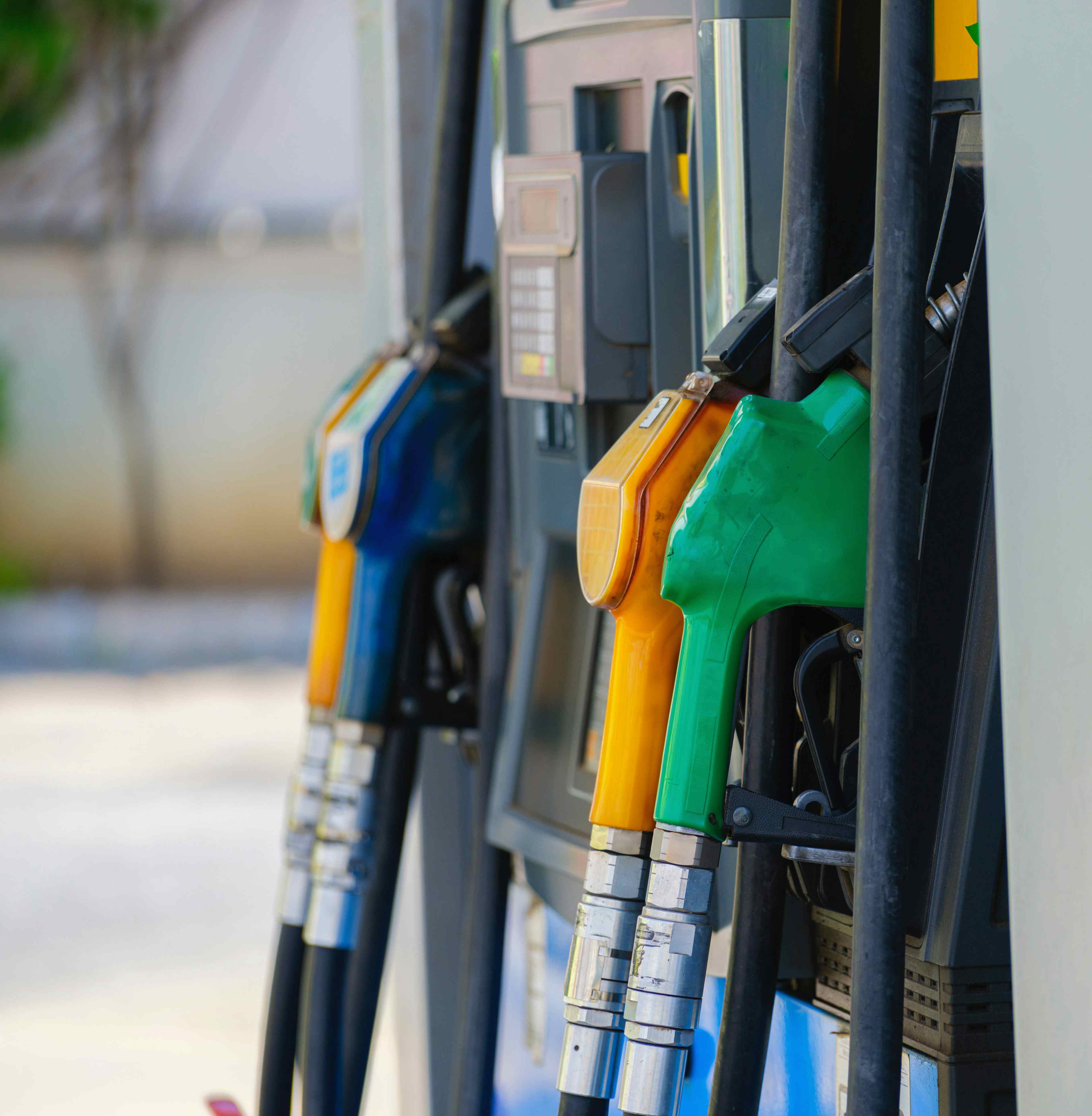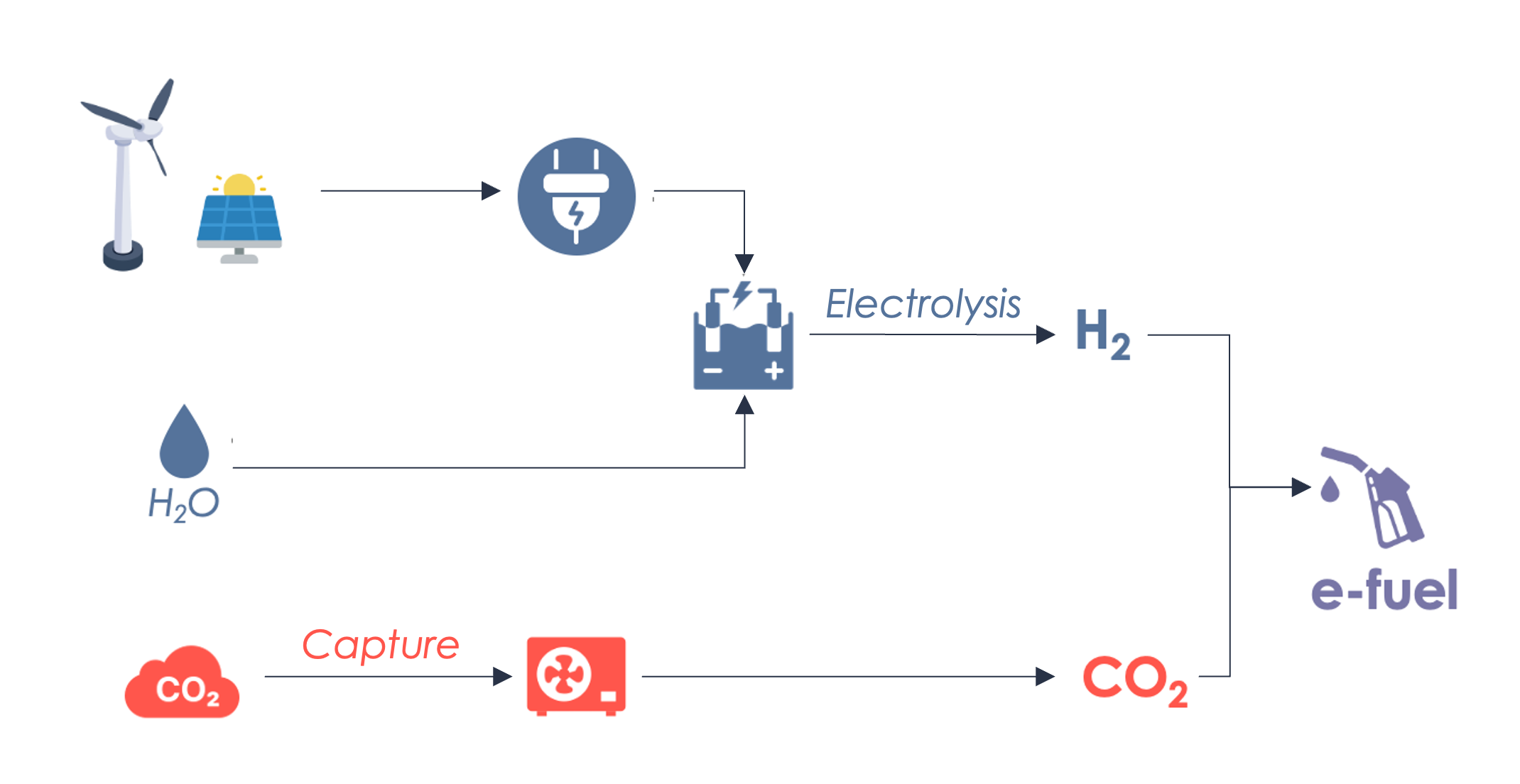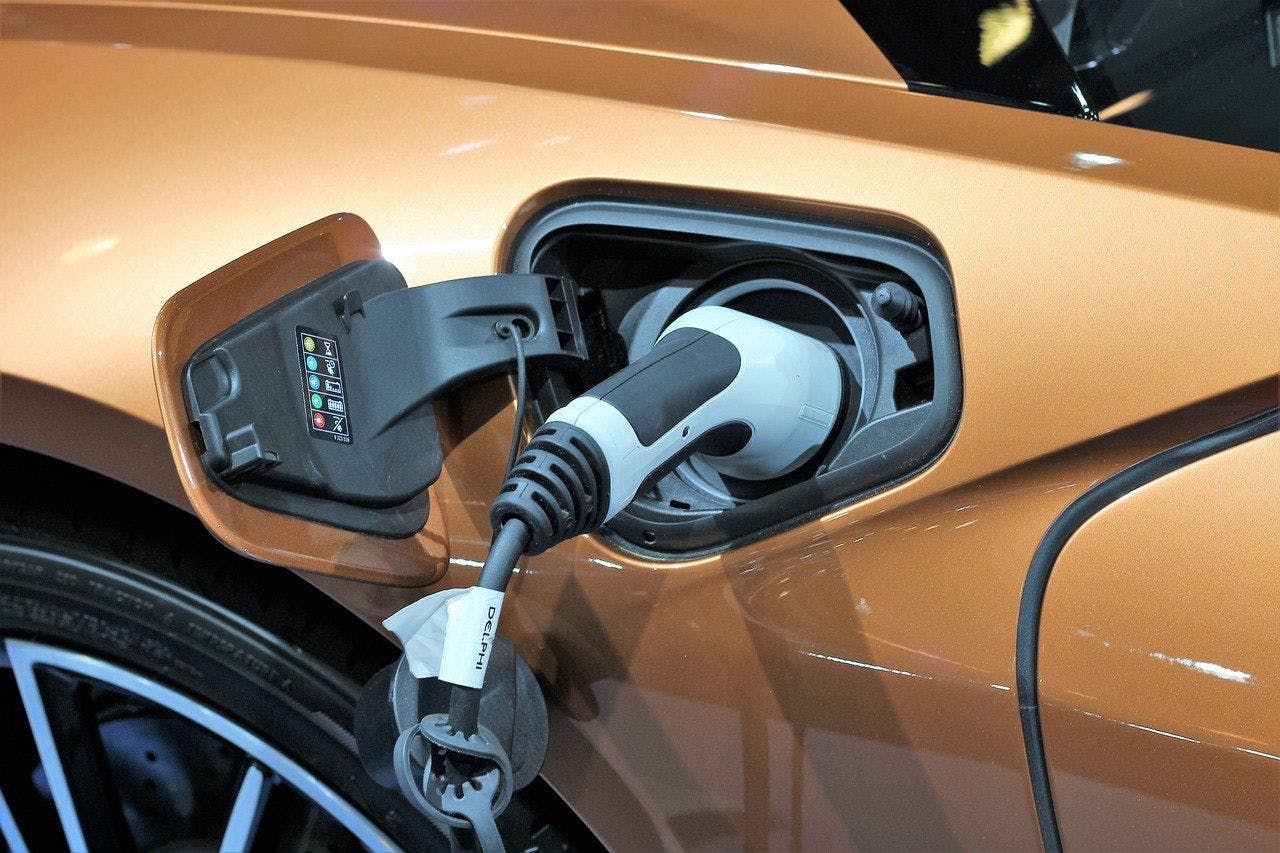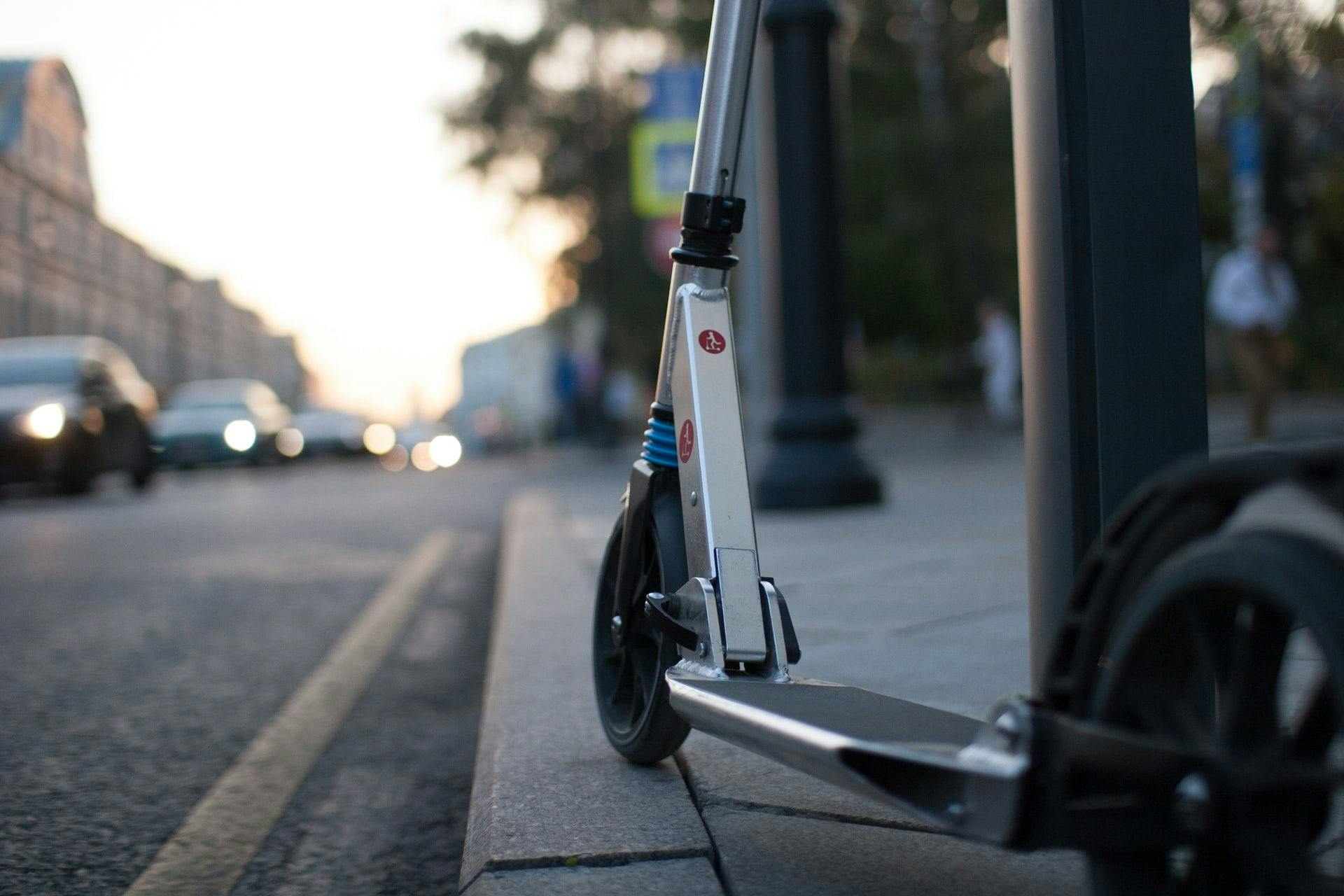The future of the European car: why are synthetic fuels not the solution?
In line with its ambition to reduce the continent's emissions by 55% by 2030, in July 2021 the European Commission presented its objectives and measures for light vehicles[1]. Among them is the obligation for manufacturers to reduce CO2 emissions per kilometre from new vehicles by 100% by 2035, a provision that caused a stir because it amounts de facto to banning the sale of new combustion-powered vehicles. Despite an agreement reached at the end of 2022 between the Council (the institution representing the Member States) and the Parliament (the institution representing European citizens) on this target, the European authorities finally backed down last March during the final vote: under pressure from Germany in particular, the European Union went back on this ban, introducing an exception for "carbon-neutral e-fuels". What consequences does this reversal have for Europeans, and is this exemption justified?
Context
Transport by car and van accounts for around 15% of total emissions in the European Union[2]. In France, national emissions from the road transport sector recorded in the SECTEN inventory are up slightly since 1990 (116 MtCO2e in 1990 compared with 127 in 2019), despite the fact that the National Low Carbon Strategy is aiming for "complete decarbonisation by 2050"[3]. The ban on new internal combustion vehicles, coupled with a strategy of sobriety, therefore represents a major challenge both from the point of view of the decarbonisation imperative and the competitiveness of European industries, faced with the challenge of electrification and the emergence of new players who have long been positioned on the electric market (Tesla, the best known, Byd in China). Despite this, many voices, including Germany's, spoke out against the measure, fearing that it would weaken the automotive industry, which accounts for 12% of the country's workforce and 4.7% of its GDP[4]. A compromise was finally reached at the end of March, on the basis of an exemption for vehicles powered by "carbon-neutral" synthetic fuels known as "e-fuels".
Les « e-fuels », une alternative crédible aux carburants classiques pour décarboner ?
Electrofuels, known as "e-fuels" or "synthetic fuels", are new-generation liquid or gaseous fuels. They are synthesised from renewable energy sources such as solar, wind or hydroelectric power to produce hydrogen (via a water electrolysis process) and carbon dioxide (or nitrogen in the case of e-ammonia). The CO2 used during the process can either be captured diffusely in the atmosphere (so-called DACCS technologies) or captured directly from the effluents of certain high-emission industrial sites (so-called CCU/CCS technologies).
This chemical process for creating synthetic fuel is not new. In the 1920s, two German chemists, Franz Fischer and Hans Tropsch, succeeded in liquefying a synthetic gas produced from coal, of which Germany had an abundance. It was not until the Second World War that this technology was developed on a large scale, in particular to meet the fuel needs of the German army.
The complexity of the chemical synthesis and refining process makes these fuels extremely expensive, which is the main reason why they were only developed to a very limited extent after the war, in favour of petroleum-based fuels.
More recently, these electrofuels have emerged as a promising solution for reducing greenhouse gas emissions in the transport sector for two main reasons. Firstly, they can be used in current combustion engines without requiring major modifications. Secondly, electrofuels have a carbon footprint that is at least 70% smaller than that of petroleum fuels[5] throughout their production cycle. These synthetic fuels are therefore an effective solution for reducing greenhouse gas emissions from transport.
However, this type of fuel suffers from a major flaw that calls into question its relevance for decarbonising motor vehicles: its low energy efficiency compared with battery-electric vehicles (the main alternative for decarbonising cars). While the latter uses electricity directly, the e-fuel engine involves an additional energy conversion: the synthesis of the fuel. Added to this is the fact that once the energy has been charged into the car (either by an electric battery or by storing the e-fuel), the electric motor is much more thermally efficient, so the energy given back to the car to move forward will be greater than for its internal combustion equivalent.
As a result, with the same amount of decarbonised electricity available, a battery-powered vehicle can cover 3 to 5 times as many kilometres[6] as its internal combustion equivalent using e-fuel. The choice of whether or not to use e-fuels is therefore above all a question of prioritising the use of available low-carbon energy.
While the car industry can use electric batteries, this will not be the case for other mobility sectors. Heavy and long-distance transport (land, sea and air) will find it difficult to decarbonise through electrification or hydrogen. E-fuels therefore appear to be an interesting transitional solution, complementing a more global decarbonisation strategy. Proof of the growing interest in this type of fuel, the aeronautical sector has very recently increased the proportion of its use in its decarbonisation roadmap for the European Union, starting in 2030[7].
Carbon-”neutral" fuels?
In addition to efficiency considerations, a second reservation can be made about the "neutral" nature of these fuels. The argument put forward for reversing the ban on new combustion vehicles is based on the supposed carbon 'neutrality' of these synthetic fuels: the combustion engine powered by an e-fuel would be 'neutral', insofar as the CO2 emitted during its combustion would first have been taken from the air or from the factory, and the hydrogen needed to produce it would have been generated from decarbonised electricity. In this respect, European legislation should make no distinction between an internal combustion vehicle running on synthetic fuel and an electric vehicle: since both solutions are considered equivalent (because they are "neutral"), European legislation should refrain from favouring one or the other in its wording, and leave it to the market to select the most viable technological option. The reasoning, while seemingly appealing, does not stand up to analysis.
- Firstly, it is highly questionable to consider the two types of engine to be neutral, and therefore equivalent, on the grounds that the CO2 used to produce e-fuels has first been captured on an industrial site or in the air. Since the ban on the production of internal combustion vehicles powered by conventional fuels is not the subject of debate between the political authorities, the appropriateness of the exemption granted to e-fuels presupposes comparing 1) the situation in which internal combustion vehicles are banned and only new electric vehicles are authorised with 2) the situation in which internal combustion vehicles are banned and both e-fuels and electric vehicles are authorised. However, the equivalence between electric vehicles and e-fuel, even from the sole point of view of combustion emissions, is only valid if we assume that the capture device (DACCS or CCU) has been deployed for the production of e-fuel. Let's consider the most favourable case for e-fuels, i.e. the one in which the fuel is synthesised from CO2 taken from the atmosphere (the device therefore starts by generating a "negative emission": CO2 is removed from the atmosphere). The diagram above shows the flow of combustion emissions from a plant and a vehicle in several configurations (with or without a capture device; electric, thermal or e-fuel).
- But above all, it would be highly questionable to confine ourselves to combustion emissions alone, which is what the critics of electric vehicles generally point out when they highlight the emissions generated by the manufacture of batteries[8]: as we have shown, the energy efficiency of a combustion vehicle, whether powered by conventional fuel or e-fuel, is much lower than that of an electric vehicle, which means that for the same distance, more energy has to be mobilised by the former. As the production of this energy generates emissions, it is wrong to assume that the emissions generated by the two types of vehicle are equivalent: a combustion vehicle powered by e-fuel is not neutral, any more than a vehicle powered by electricity, but the latter is indeed more virtuous from a climate point of view, once all the emissions generated over the life of the vehicles are taken into account.
- More fundamentally, the reasoning implicitly accepts that products can be "neutral" and that this criterion alone is sufficient to identify those best suited to the low-carbon transition. The attribute of "neutrality" presupposes the possibility of taking the emissions of a process as zero (or at least cancelling them out) - in this case, the alleged "neutrality" is supposed to reside in the capture operation prior to combustion by the vehicle, and in the renewable origin of the electricity used to produce the hydrogen - which obscures part of its climatic impact. But above all, its binary nature (a product is either neutral or it isn't) leads to an excessively simplistic understanding of the issues: if there are neutral products, it's because the choice between them can be considered equivalent from a climate point of view, and therefore politicians don't have to make a decision. The problem is not to determine whether a product is neutral or not, but to compare the merits and limitations of several solutions to a given problem (in this case, the decarbonisation of passenger transport): directing the production of carbon-free hydrogen towards passenger transport, through the production of e-fuels for example, means at the same time depriving other sectors, such as the steel industry, which do not have the same alternatives.
This last observation calls for a broader reflection on the role of the European legislator: in a context of increasingly constrained resources, the legislator cannot simply identify, from among the existing alternatives, 'neutral' products that the free market would then have to sort out. The exacerbated pressure on resources and the need for coherent action mean that politicians, in this area as in others, must fully assume their role as strategists to ensure that resources are used wisely for the common good.
Contact us
Contact us about any question you have about Carbone 4, or for a request for specific assistance.






















